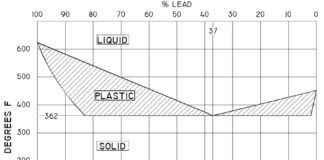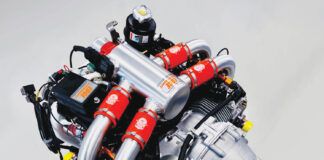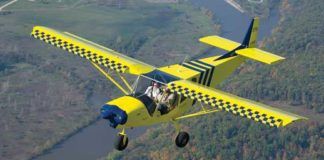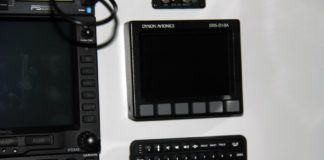When the FAAs regulation on ultralights-FAR Part 103-became effective in October 1982, there was no provision in the rule for two-place ultralight training. And there still isnt. But shortly after Part 103 became law, the FAA provided a major waiver that authorized certain two-seaters as trainers and acknowledged ultralight flight instructors registered in any of three ultralight-related organizations.
With the FAAs new Sport Pilot license (effective in September 2004), a countdown began to eliminate the two-seat ultralight training waiver, and the count continues. A major step occurred on January 31 this year: By then, the two-seat trainers had to be registered (or in the process) as an Experimental-category Light Sport Aircraft (ELSA) to remain legal. If that was not accomplished, these machines are no longer legally flyable. They qualify as neither ultralights nor as Experimental/Amateur-Built aircraft.
In January 2010-at the end of a two-year sunset period-the newly registered ELSA two-seaters will no longer be legal as instructor-owned or flight-school-owned trainers, essentially eliminating two-seat paid instruction for new and transitioning ultralight pilots. Will the change eventually end this countrys love affair with minimally regulated and totally unlicensed recreational aviation? Maybe.
A Brief Training History
Hang-glider pilots began the ultralight movement in the 1970s with simple, single-place, unlicensed flying machines. John Moody is credited with attaching a 12-horsepower two-stroke engine to one of the more sophisticated hang gliders (an Icarus II biplane), and the powered ultralight craze was born.
Initially, training was a do it yourself, watch others and do what works program. But as business people discovered commercial viability-you could actually make a living making and selling these things-paying for formal ultralight instruction became common. Every ultralight had one seat (if there was a seat at all), and lessons consisted of watching the instructor fly, emulating what obviously worked, and taking the instructors advice, often by listening to the instructors voice in a one-way radio headset.
By the early 80s, the FAA came to realize that some regulation defining ultralights and their operation was essential. More than 40,000 people responded to the notice of proposed rulemaking (NPRM), and Part 103 was the result. Ultralights were defined by a maximum empty weight of 254 pounds for those with engines, maximum fuel of 5 gallons, 24-knot stall speed and top speed in level flight under full power of not more than 55 knots.
Part 103 precludes two seats, but the waiver allowed two-seat ultralight trainers (maximum empty weight 350 pounds). From 1983 onward, two-place ultralight training was the norm for both transitioning and beginning pilots. Instructors were allowed to charge, and flight schools flourished.
The LSA Connection
Many ultralight manufacturers (106 were listed in North America in 1982) had trouble meeting the weight and speed limits. That led United States Ultralight Association (USUA) founder John Ballantyne and others to petition the FAA for higher weights and other limits.
The FAA, however, never agreed to increase ultralight specs. Instead, volunteer advisory committees were encouraged to petition for a new class of pilots license and a new category of aircraft. This led to establishing the Sport Pilot license and the Light Sport Aircraft (LSA) category in 2004. Volunteers wrote the rules for Sport Pilot and consensus standards for LSAs.
The FAA encouraged the ultralight community to transition to Sport Pilot training by offering a combination of grandfathering and incentives. For example, registered ultralight instructors were given credit for some of their instructing time and were encouraged to become FAA-certified Sport Pilot flight instructors (CFIs). Their waivered two-seat ultralight trainers were offered N-numbered registration as ELSAs. In addition, owners of illegally heavy (fat) or fast single-seat ultralights were offered ELSA registration.
But there was a catch for both instructors and pilots. Instructors may continue using their newly registered ELSA two-seaters for paid flight instruction only until January 2010. And the owners of ELSA former fat ultralights would get some flight credit toward the Sport Pilot license but would have to pass knowledge and flight standards tests.
Hows It Working?
Because ultralight pilots are not listed in the FAA database, it is impossible to know officially how many have taken the FAA up on its invitation to join the Sport Pilot ranks. According to USUA President Bob Comperini, who is an airplane CFI and Sport Pilot examiner, a sizable number of USUA-registered basic and advanced ultralight instructors have transitioned to the new Sport Pilot CFI category, but many no longer have access to two-seaters in which they can charge for instruction.
Its also obvious that a large percentage of pilots flying fat single-seaters did not register their ultralights as ELSAs before the January 31, 2008, deadline. These people have either stopped flying or are hoping they wont be caught and cited. USUA membership, Comperini said, has dropped to about half of its peak level.
Its worth emphasizing that there is no change for pilots flying legal ultralights. But rumors have persisted for years that the majority of single-seaters are too heavy and/or too fast to be legal.
Flight Schools Perceptions
Air Creation USA is a major trike (powered hang glider) sales, support and training company run for years by John Kemmeries in Arizona. Early this year, Kemmeries retired and sold the business to Neil Bungard, who moved it to Rodeo, New Mexico. Bungard is a trike CFI and Sport Pilot examiner who has licensed or added trike endorsements for about 75 pilots. Most were transitioning from ultralight trike experience or from other types of aircraft. A few took their initial flight training in trikes. Not one of them, he said, aimed for the no-license ultralight option. All were intent on Sport Pilot qualification to fly trikes, meaning they can fly with a passenger.
Until January of 2010, Air Creation can charge for training in its two-seat ELSA trikes. At that point, the cost of training will rise substantially because the ELSA trainers (worth about $20,000, Bungard estimates) wont be legal for paid flight instruction. The requirement will be to buy factory-built SLSA Air Creation trikes, which may cost about $60,000 each. Two Air Creation models-the two-seat Tanarg and the single-seat Racer-are registered as SLSAs, and a third model, the GTE Trek, is in the SLSA certification process.
Bungard mentioned one possibility for continued training in the ELSA two-seaters: fractional ownership. If the student pilot owns the aircraft, a non-owner CFI may charge for instruction. Bungard said the FAA is looking at this option and may provide guidance to preclude subterfuge or other abuse.
Rainbow Aviation, run by Brian and Carol Carpenter, in Corning, California, is a fixed-wing Sport Pilot and ultralight FBO. The Carpenters also train LSA inspectors and maintainers. Flight schools have known since 2004 that they will need ultralight-style SLSAs for useful ultralight training beginning in 2010, Brian says. Despite a major lull in ultralight training now, he forecasts a resurgence in legal ultralights in about five years, with electric power becoming a major factor.
As Seen from Here
As a former ultralight instructor, I find it difficult to be optimistic about ultralight training right now. Newcomers who want to fly these light recreational craft should probably shift their sights to the Sport Pilot category and find the lowest-wing-loading trainer they can-and an instructor with lots of ultralight time. Pilots of Part 103-legal flying machines will be able to continue, but an era is coming to a close. However, if Brian Carpenter is correct, ultralights will emerge later in a different form.
For more information, contact Air Creation USA at 520/203-1276, or visit www.aircreation.net; Rainbow Aviation is at 530/824-0644, www.rainbowaviation.com.
Dave Martin served as editor of this magazine for 17 years and began aviation journalism evaluating ultralights in the early 80s. A former CFI (airplanes, gliders, instruments), hes flown more than 160 aircraft types plus 60 ultralights (including a single-seat, no-basket hot air balloon). Now living at a residential airpark in Oregon, he flies his Spacewalker II homebuilt as a Sport Pilot.




